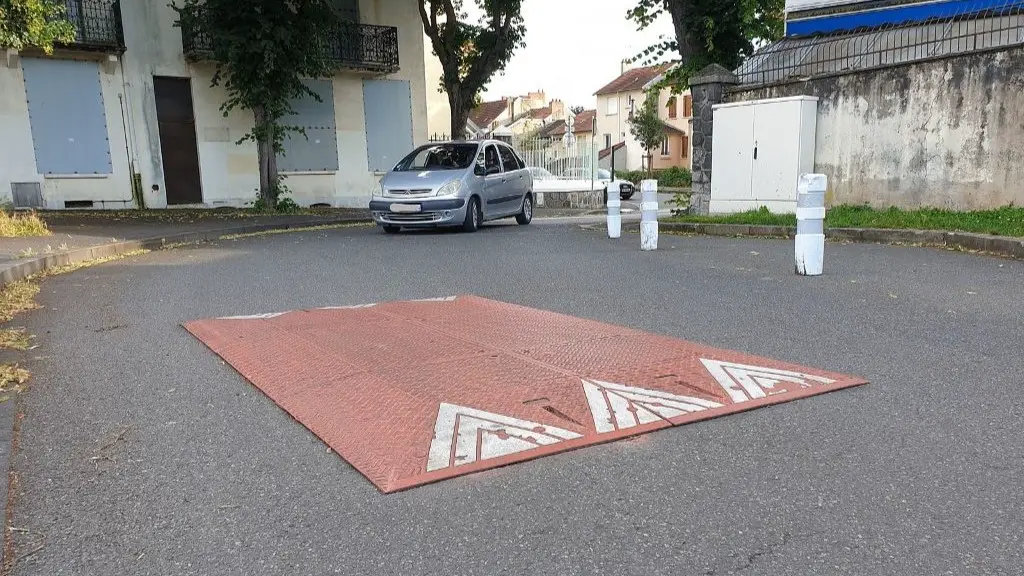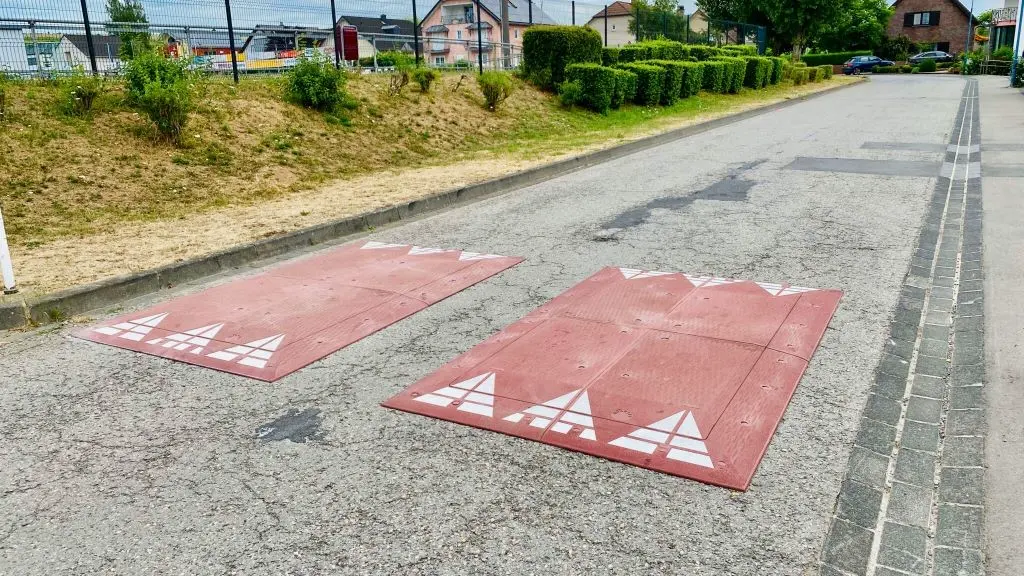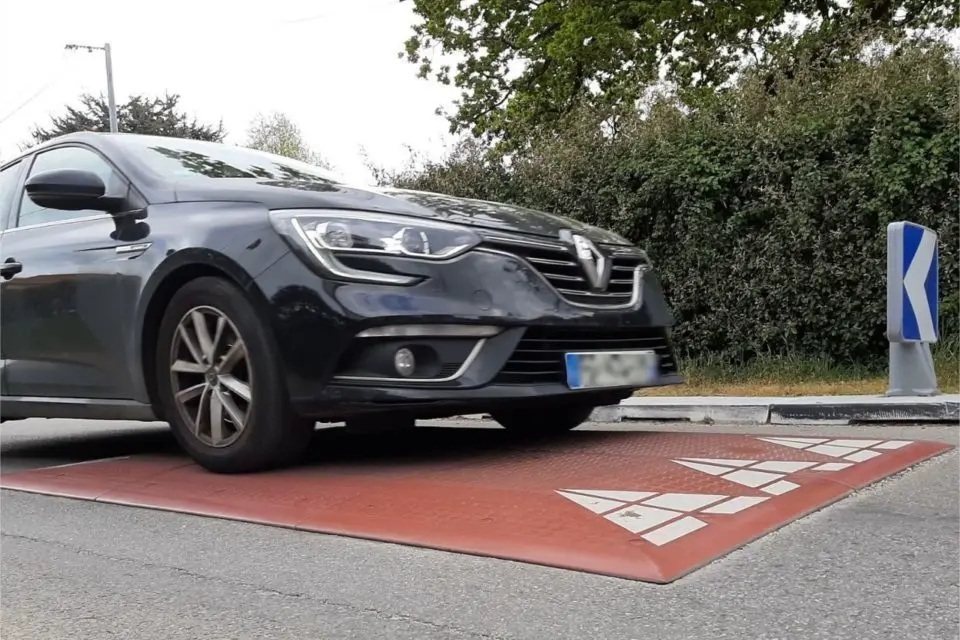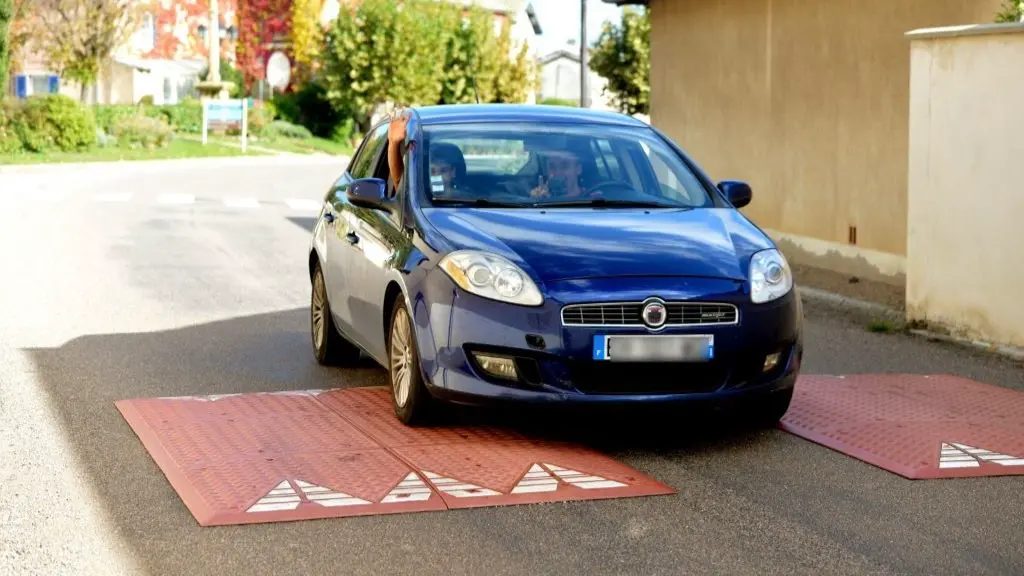Top 8 Frequently Asked Questions about Speed Cushions
Traffic calming measures like speed cushions, speed humps, speed bumps, pavement markings, and bollards are installed in city streets, roadways, and parking lots to provide safety to pedestrians, cyclists, bicyclists, and motorists.
They come in different designs, shapes, and dimensions. However, each design aims to encourage responsible driving and reduce road accident frequency and associated deaths.
One of the most effective and popular traffic control devices is speed cushions. They are installed in a variety of places to slow down speeding vehicles.
If you are interested in using this tool but do not know much about it, you have come to the right place. This article answers top FAQs about speed tables so you can decide whether they are the right choice for you or not.
For more information about Speed Cushions, you can discover here: Speed Cushions: All answers to your questions.

Discover here our full range of Speed Cushions!
What is a speed cushion?
Speed cushions have a raised surface that acts as an obstacle and enforces car drivers to reduce their speed to have a smooth driving experience over them.
They also have wheel cutouts that allow long-axle vehicles like fire trucks, ambulances, and buses to pass unaffected. Due to this feature, speed cushions are preferably installed on emergency response routes. They are fixed across the width of a road, usually at the center of a traffic lane.
Speed cushions are called by many other names, such as road cushions, speed lumps, and speed tables. No matter what name you use, the tool will serve the same purpose.

How do speed cushions work?
Speed cushions have an extended raised surface. Hence, to drive over them smoothly, one must reduce their vehicle’s speed; otherwise, the vehicle may get scrapped, or the driver may feel discomfort or experience a sudden jerk.
Their width is large for standard cars, so they must slow down to drive over them. But it is small for emergency vehicles and buses that can pass over them without speed reduction.
Due to this reason, a speed cushion is used in place of a speed bump, speed hump, or speed breaker in an emergency vehicle route. Other tools do not have wheel cutouts, forcing emergency vehicles to slow down while driving over them.
What are speed cushions made of?
These traffic safety tools are available in the market in a variety of materials, including:
- Recycled plastic
- Recycled rubber
- Concrete
- Asphalt
Each material has its own pros and cons. But if you compare them, you will find recycled rubber a better option. It is mainly because:
- It is flexible; hence has the least impact on vehicles.
- It is soft, so it produces the least traffic noise.
- It is eco-friendly, hence helping protect the environment.
- It is low-cost, which helps save money.
- It is durable and low-maintenance.
- It can mold its shape according to the road’s surface.

Are speed cushions noisy?
Speed cushions produce noise, but it is much less than other speed control tools like road bumps or humps. Their elongated surface gives a smooth driving experience, while the small raised surface of speed humps or speed bumps may cause a slight jerk.
Speed table noise depends on its material. Concrete and asphalt are hard materials, so speed cushions made of these materials naturally produce more traffic noise.
In contrast, rubber is a soft material that produces the least impact on vehicular tires. So, speed cushions made of this material produce the least noise.
You should use a rubber speed cushion if you need traffic calming techniques with the least noise for a slow zone, school zone, unmarked crosswalk, or roundabout.
Get in touch
The Speed Cushions Factory is a leading manufacturer of rubber speed cushions located in Qingdao, China.
Feel free to contact us!
We are always here to help!
Qingdao, Shandong Province, China.
sales@speed-cushion.com
What are speed cushions spacing from each other?
The spacing between adjacent speed cushions should be wide enough to allow the movement of a tire of a large vehicle (ambulance, school bus, etc.) or the movement of a cyclist or bicyclist.
Single speed cushion is usually used in a narrow roadway, intersection, driveway, or pedestrian crossing. In contrast, two speed cushions are installed in wider traffic lanes, traffic circles, residential areas, complete streets, pedestrian crossings, or roundabouts.
You should adjust the spacing between two speed cushions according to your pedestrian safety and traffic safety goals.

What do speed cushions cost?
The cost of a speed cushion depends on various factors, including its material, size, and additional features.
Let’s have a look at how each factor influences its cost.
- Material: Out of all the available options, recycled plastic and rubber are the most economical. They are easy to carry and install, which helps save installation costs. Their low-maintenance nature reduces their maintenance cost.
- Dimensions: You can find speed cushions in various sizes in the market. It is needless to say larger speed cushions cost more than smaller ones because their construction takes more time, material, and effort.
- Additional features: Speed cushions with extra features are usually costlier than those without them. Some examples of these features are reflective tapes, customization, etc.
How to drive over speed cushions?
To have a smooth driving experience over a speed cushion, drivers must reduce their vehicular acceleration from 15 to 20 mph. If they don’t reduce the speed or drive over the tool at high speed every other day, the vehicle may experience internal damage.
Large vehicles should keep their tires in the wheel cutout. This way, they will not have to reduce their speed while driving over the tool.
Cyclists or bicyclists can also pass through the wheel cutout to avoid the speed cushion and keep driving at the same speed.

Do speed cushions work?
The Department of Transportation and the Federal Highway Administration use various tools like speed cushions, traffic cones, speed breakers, rumble strips, wheel stops, stop signs, traffic signals, and parking signs to make roads, streets, and parking spots safe for people.
All these tools perform different roles. Speed cushions play an essential role in reducing the speed of cars without influencing the speed of large-axle vehicles. They are very effective and can reduce car speed by up to 20 miles per hour (mph).
They offer multiple benefits such as:
- They allow stormwater to flow freely on the road surface and reach the drainage channel easily.
- They help emergency vehicles to maintain their emergency response time.
- Their raised section causes the least discomfort to drivers and damage to vehicles.
- You can use them in various places, such as intersections, traffic lanes, pedestrian crossings, and urban areas, to control city traffic volume and prevent collisions.

Conclusion
Speed cushions are one-of-a-kind traffic-management tools that slow down speeding cars without slowing down ambulances, buses, or other large vehicles.
They come in different forms in the market, so you can choose one that best meets your needs. The important features you must look for in speed cushions are their size, material, reflective surface, design, quality, and cost.
If you are looking for a speed cushion that causes the least impact on vehicles and lasts for years, you should go for rubber speed cushions. They are highly versatile, durable, and effective.
Get in touch
The Speed Cushions Factory is a leading manufacturer of rubber speed cushions located in Qingdao, China.
Feel free to contact us!
We are always here to help!
Qingdao, Shandong Province, China.
sales@speed-cushion.com
You might be interested in the below articles:
- What are the Most Famous Traffic Calming Devices?
- How Far apart should Speed Cushions be Installed?
- How to Install a Speed Cushion?
- Top 5 Speed Cushions Brands!
- What are the Dimensions of a Speed Cushion?
- Speed Bumps, Humps, Tables, Cushions – What’s the difference?
- Speed Cushions vs. Speed Bumps, Humps, and Tables
- Speed Cushions in Different American Cities
- How does a Speed Cushion work?
- What are Speed Cushions Regulations?